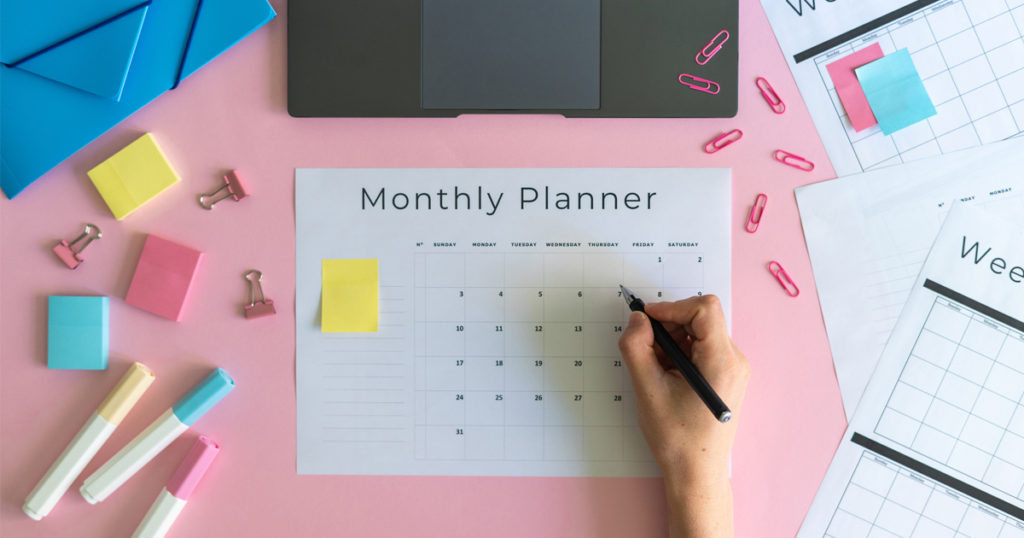Being Successful as a Sophomore

School supplies may be all set to go, but is there a planner or calendar system included? Planners help establish deadlines for future assignments and events. A previous article suggested that sophomore year is the appropriate time for your student to determine a career plan. Identifying interests and skills play a large role in planning a future career.
Why It Matters
- Being organized is a life skill.
Using a calendar system or planner is a great way of making connections between different types of obligations, such as extracurricular events, assignments, job and home life. In the future, your student might have to balance quite a few obligations – career, children and home responsibilities. Getting started in high school will pay dividends throughout your student’s lifetime, especially when it comes to defining the steps toward that future career. - Interests, skills and values play important roles in career planning.
CareerOneStop is a website sponsored by the U.S. Department of Labor. The site offers three different self-assessments – Interest, Skills and Work Values. As you are most likely aware, more time is typically spent at work than at home, and it’s beneficial to enjoy going to work every day. Matching interests, skills and personal values to a career is very rewarding, keeping in mind, of course, that the first job isn’t necessarily the one a person has until retirement.
What Your Student Can Do Now
- Use the planner.
Start logging in to the planner any events and obligations from the schedules your student has already received related to extracurricular, sports, job and other outside interests. Also be sure to note school holidays! Organizational and planning habits that start now will only be strengthened after high school. - Take assessments.
To partner with planning and organizational habits, the three assessments in the CareerOneStop website can help your student be better prepared to connect the first term’s classes to a future career.
Interest Assessment – 30 questions with an end result of a list of careers matching the interests.
Skills Matcher – identifies the two types of skills – technical and soft – and then matches those skills to careers that use them.
Work Values Matcher – six core work values were developed by the Department of Labor’s O*NET program.
If these assessments have previously been completed, a chart is provided in the right sidebar for your student to do some self-reflection.
- Sign up.
Sign up for Iowa College Access Network’s (ICAN) weekly Tip of the Week.
What Your Student Can Do Later
- Evaluate and assess.
Taking assessments more than once is beneficial. Hesitant answers the first time might now be more solidified. Besides, it doesn’t cost a thing to take them! Keep the options wide open – there are so many career opportunities with some of those careers not even created yet. Assure your student it isn’t necessary to narrow the options down to only one career right now. Capitalize on the many possibilities resulting from the assessments – many more than what were probably available to you at the same age.
What You Can Do
- Share your system for organization.
If you use a planner in your daily work, discuss with your student how you use it. They are a useful tool to make connections between different types of obligations, such as extracurricular events, assignments and home life. - Observe your student.
By now, you know your student better than anyone. What are your observations about the skills and interests your student has that will help you provide direction? Does your student excel in math or science courses or are English or writing classes preferred? Does your student prefer technical or mechanical classes to academic ones? Share your observations using the results of the assessments as a conversation starter. - Keep records.
Keep any printed information from the career assessments and set aside any of the handouts you completed so they can be used with future articles. A guide to using the CareerOneStop website is included in the right sidebar. We’ve also included an internally developed Career Investigation Chart — we hope you find it useful when guiding your student during this important year.
Next Steps
Be sure to complete the survey questions at the end of this article to be entered into the 529 deposit giveaway!
Additional references, handouts and talking points are available in the right sidebar to use at your leisure. They may prove beneficial to reference now or after receiving future emails – we’ll leave it completely up to you. Use our emails like a recipe for a successful outcome — assemble the recommended ingredients and then follow accompanying directions to add flavor and depth.
